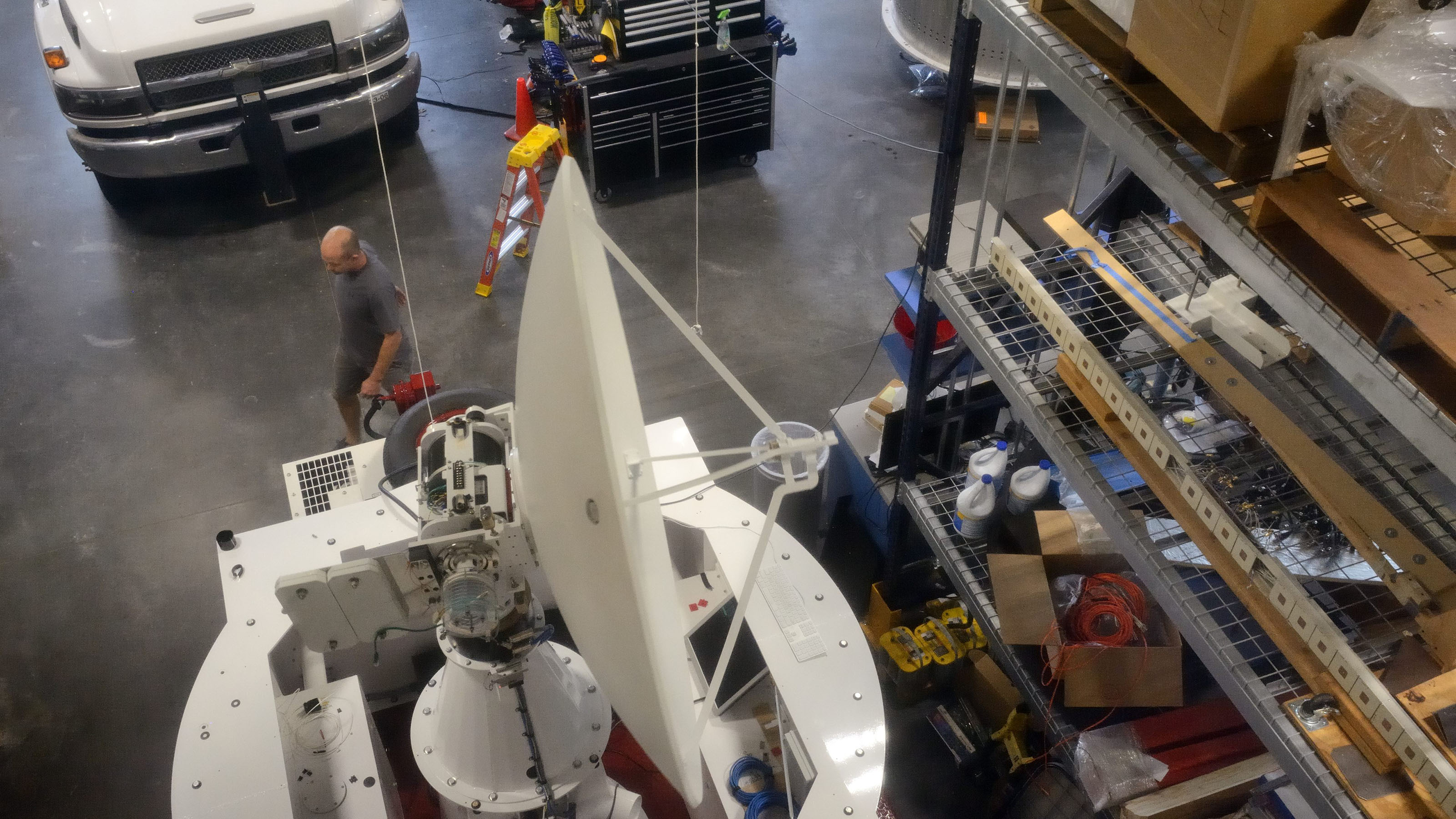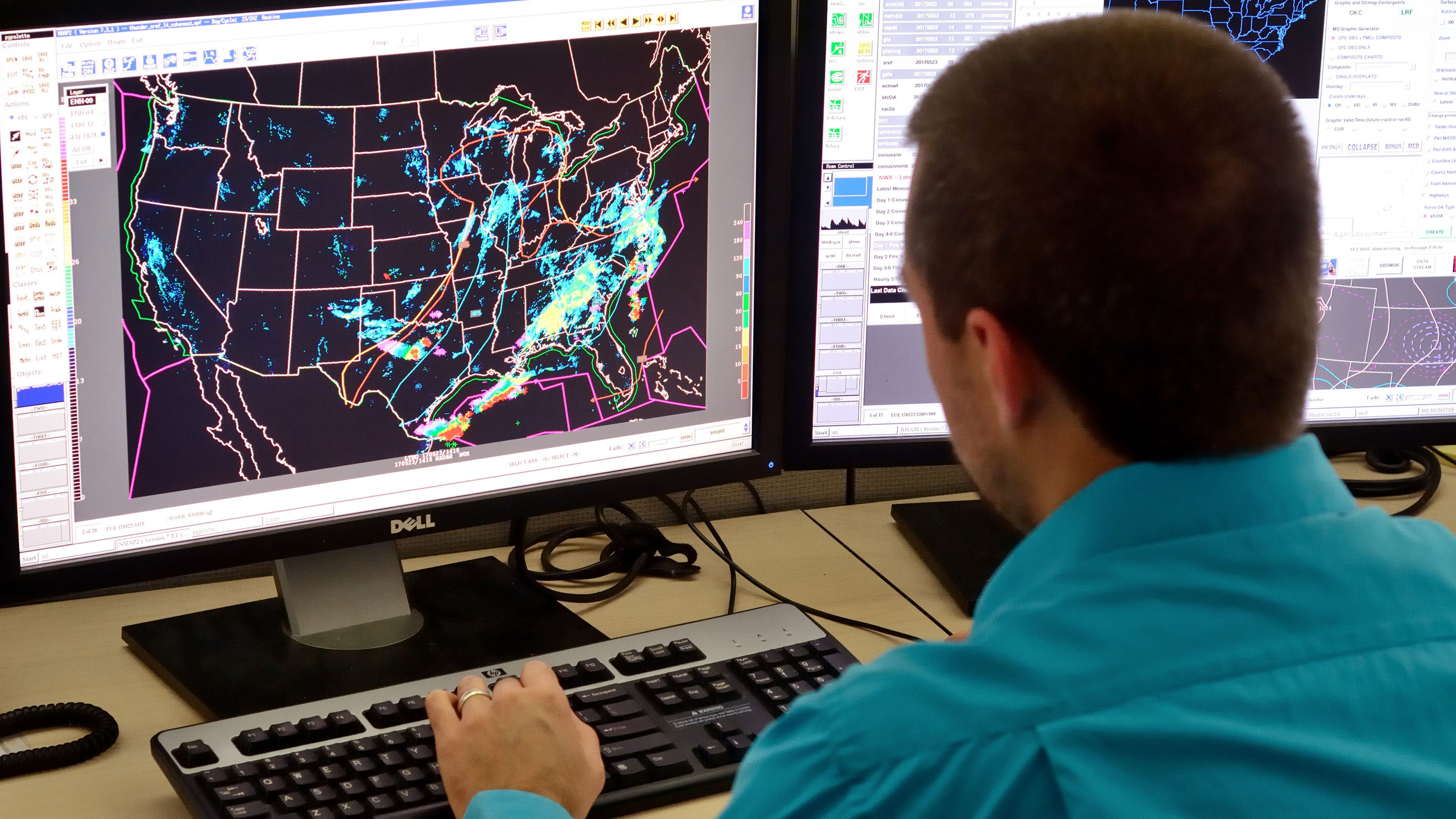Inside the National Weather Center
Norman Fly-In provides unique opportunities
Many pilots become fascinated with weather. In many cases, that interest expands to the weather in general, far beyond simply learning about how the atmosphere will affect your next flight. If that flight will be to Norman, Oklahoma—where AOPA’s second fly-in of 2017 takes place Sept. 8 and 9—the destination includes a unique opportunity: an up-close, inside look at the National Weather Center.
The National Weather Center is a partnership between the National Oceanic and Atmospheric Administration, the University of Oklahoma, and other agencies and organizations to further understanding of the Earth’s atmosphere. In addition to OU’s School of Meteorology and College of Atmospheric and Geographic Sciences, it’s home to NOAA’s Storm Prediction Center, which forecasts hazardous weather—including tornado and severe thunderstorm watches—around the clock; the National Severe Storms Laboratory, where scientists work to improve forecasts and warnings of severe weather; the Nexrad Radar Operations Center; and the National Weather Service’s Norman forecast office, one of 122 such regional facilities across the country.
This program takes place at the National Weather Center, and includes transportation that departs the fly-in at 8:30 a.m.; the program runs until 4 p.m. Pre-registration is required; the cost is $105 for AOPA members; $155 for nonmembers; and $75 for a spouse. (Attending the fly-in itself is free.) To register, visit the website.
For visitors who aren’t able to participate in any of the fly-in’s four all-day workshops, there will be three 90-minute tours of the National Weather Center facility. Cost is $10; meet at the AOPA Tickets and Information Tent at the airport for bus transportation to the National Weather Center. The buses will depart at 9:45 a.m., 12:45 p.m., and 2:45 p.m. Pre-registration is required.

More than 500 people work in the 244,000-square-foot National Weather Center building. That doesn’t include OU’s Radar Innovations Laboratory next door. In that 35,000-square-foot radar research facility, new radar technologies are designed and fabricated; a high-bay garage allows radars to be mounted on mobile platforms.
Aviators will be fascinated by the Storm Prediction Center, source of all tornado and severe thunderstorm watches in the continental United States. Mesoscale forecasters focus on dangerous weather up to six hours in the future, covering about half a state. Outlook forecasters prepare such products as the convective outlook; Day 1 catalogs today’s threats, Day 2 is tomorrow’s, and Day 3 covers the following day. Everything gets funneled through the lead forecaster’s desk; he also prepares the Day 1 Convective Outlook, explained Joey Picca.
Some offices are testing terminal forecasts from grids, instead of discrete locations, he said. “So if you’re a helicopter landing at a hospital, there’s a TAF for you.”

Nearby, Aaron Gleason is working the mesoscale desk, tweaking the Enhanced Thunder Product referenced by aviation forecasters and popular with civilian meteorologists. He’s looking closely at fronts and surface pressure patterns. “Where are the features that are going to trigger thunderstorms?” he asked. “I’m looking for upper-level troughs, fronts at the surface—lift sources.”
Picca has been looking into the capabilities of dual-polarization weather radar. “It helps us better identify where the updrafts are. They also tend to be very turbulent areas.” New updrafts pinpoint future storm development, Picca added.
In May, the National Weather Center was testing GOES-R, the next-generation geostationary weather satellite, which could go live by September. It updates every minute, versus 15-minute updates for the current GOES-East and GOES-West satellites. “Right now we’re seeing things experimentally that we’ve never seen before from satellites,” said Patrick Hyland, National Weather Service coordinator of external relations. It also means an additional terabyte of data daily, for each National Weather Service office.
The National Weather Center sees 35,000 visitors each year. Public tours are offered at 1 p.m. Monday, Wednesday, and Friday; larger group tours are at 10 a.m. and 1 p.m. Tuesday and Thursday; and the public can visit the first floor, including the Flying Cow Café—located beside Dorothy, the prop from the 1996 movie Twister—during business hours.
Back at the University of Oklahoma Westheimer Airport, the fly-in’s exhibit hall opens at 4 p.m. Friday, and the always popular Barnstormers Party begins at 6 p.m. Camping with your aircraft is encouraged. Saturday activities include free seminars, dozens of exhibits and display aircraft, and a Pilot Town Hall with AOPA President Mark Baker. Not to be missed is AOPA’s first short takeoff and landing demonstration. Pilots who compete in the annual Texas STOL Roundup, which will take place Sept. 29 through Oct. 1 in Hondo, Texas—will present a free seminar on Saturday morning, covering important aspects of STOL and backcountry flying techniques, and then demonstrate the concepts for all attendees at noon.
For more information on AOPA’s Norman Fly-In or to register, visit AOPA's fly-in web section.




